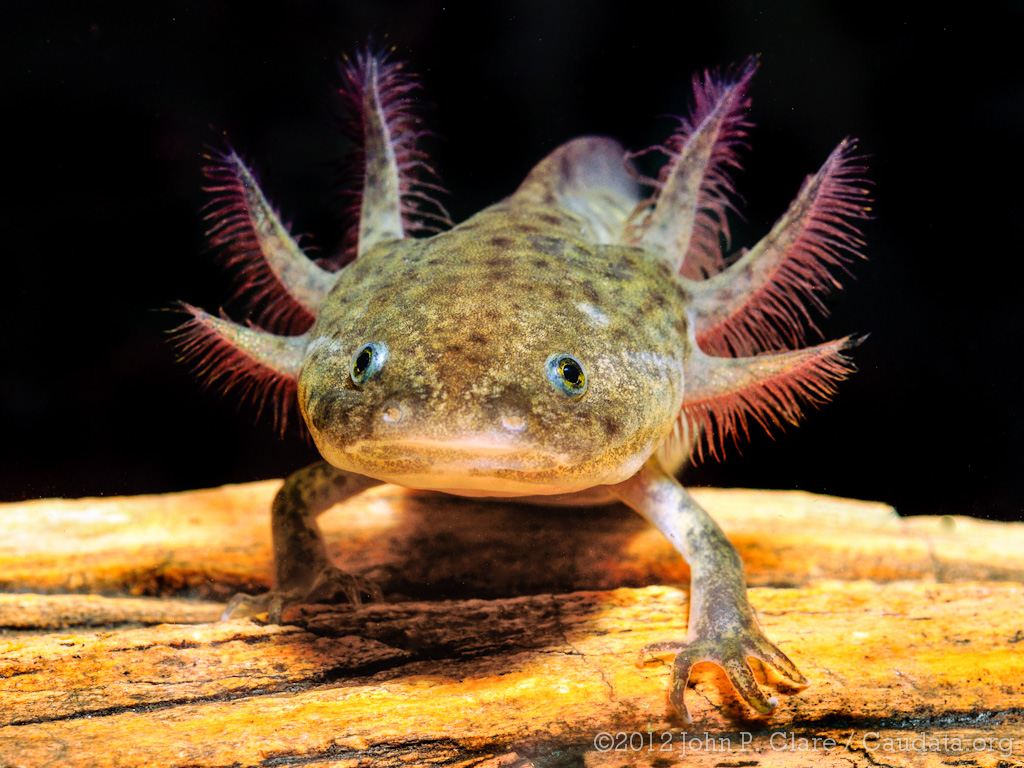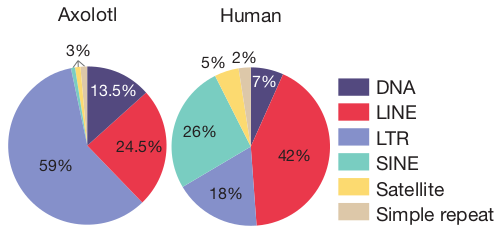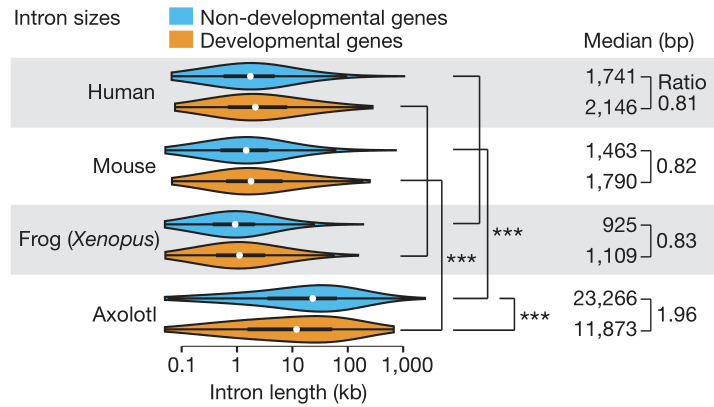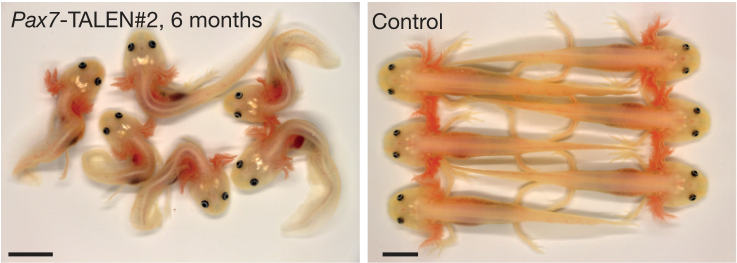1.4 KiB
1.4 KiB
The axolotl genome and the evolution of key tissue formation regulators
- Introduction
- Genome characteristics
- Methods
- Genome annotation and analysis
- Comparative genomics analysis
- Conclusion
Introduction
- Ambystoma mexicanum
- No metaphormosis
- Extensive regeneration abilities
\vspace{1.3cm}

Genome characteristics
- Large genome: 32 Gb
- High number of repeats: ~65%
- Mostly long terminal repeats (LTR)
\vspace{2cm}

Methods
- PacBio + Illumina
- Development of a novel genome assembler (MARVEL)
- Thorough assessment of the genome assembly
Genome annotation and analysis
- Protein-coding genes: ~23.000
- Large median intron size: x13 human
- Intron size varies in developmental genes
- Identification of 5 transcripts
\vspace{1.5cm}

Comparative genomics analysis
- Analysis of homologs: Pax family
- Deletion of Pax3: functionality present in Pax7
- Mutation experiments: CRISPR and TALEN

Conclusion
- Sequencing and annotation of a challenging organism
- Identification of limb regeneration transcripts
- Foundation to investigate gene regulation in regeneration